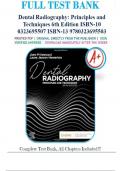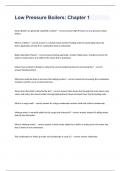,Table Of Contents
PART I. Radiation Basics
1. Radiation History
2. Radiation Physics
3. Radiation Characteristics
4. Radiation Biology
5. Radiation Protection
PART II. Equipment, Film, And Processing Basics
6. Dental X-Ray Equipment
7. Dental X-Ray Film
8. Dental X-Ray Image Characteristics
9. Dental X-Ray Film Processing
10. Quality Assurance In The Dental Office
PART III. Dental Radiographer Basics
11. Dental Radiographs And The Dental Radiographer
12. Patient Relations And The Dental Radiographer
13. Patient Education And The Dental Radiographer
14. Legal Issues And The Dental Radiographer
15. Infection Control And The Dental Radiographer
PART IV. Technique Basics
16. Introduction To Radiographic Examinations
17. Paralleling Technique
18. Bisecting Technique
19. Bite-Wing Technique
20. Exposure And Technique Errors
21. Occlusal And Localization Techniques
22. Panoramic Imaging
23. Extraoral Imaging
,24. Imaging Of Patients With Special Needs
PART V. Digital Imaging Basics
25. Digital Imaging
26. Three-Dimensional Digital Imaging
PART VI. Normal Anatomy And Film Mounting Basics
27. Normal Anatomy: Intraoral Images
28. Film Mounting And Viewing
29. Normal Anatomy: Panoramic Images
PART VII. Image Interpretation Basics
30. Introduction To Image Interpretation
31. Descriptive Terminology
32. Identification Of Restorations, Dental Materials, And Foreign Objects
33. Interpretation Of Dental Caries
34. Interpretation Of Periodontal Disease
35. Interpretation Of Trauma And Pulpal And Periapical Lesions
,Chapter 01: Radiation History
Iannucci: Dental Radiography, 5th Edition
MULTIPLE CHOICE
1. Radiation Is Defined As
A. A Form Of Energy Carried By Waves Or
Streams Of Particles.
B. A Beam Of Energy That Has The
Power To Penetrate Substances And
Record Image Shadows On A
Receptor.
C. A High-Energy Radiation Produced By
The Collision Of A Beam Of Electrons
With A Metal Target In An X-Ray Tube.
D. A Branch Of Medicine That Deals With
The Use Of X-Rays.
ANSWER: A
Radiation Is A Form Of Energy Carried By Waves Or Streams Of Particles. An X-Ray Is
A Beam Of Energy That Has The Power To Penetrate Substances And Record Image
Shadows On A Receptor. X-Radiation Is A High-Energy Radiation Produced By The
Collision Of A Beam Of Electrons With A Metal Target In An X-Ray Tube. Radiology
Is A Branch Of Medicine That Deals With The Use Of X-Rays.
DIF: Recall REF: Page 2 OBJ: 1
TOP: CDA, RHS, III.B.2. Describe The Characteristics Of X-Radiation
MSC: NBDHE, 2.0 Obtaining And Interpreting Radiographs | NBDHE, 2.1 Principles Of
Radiophysics And Radiobiology
2. A Radiograph Is Defined As
A. A Beam Of Energy That Has The Power
To Penetrate Substances And Record
Image
Shadows On A Receptor.
B. A Picture On Film Produced By The
Passage Of X-Rays Through An Object
Or Body.
C. The Art And Science Of Making
Radiographs By The Exposure Of An
Image Receptor To X- Rays.
D. A Form Of Energy Carried By Waves Or
A Stream Of Particles.
ANSWER: B
An X-Ray Is A Beam Of Energy That Has The Power To Penetrate Substances And
Record Image Shadows On A Receptor. A Radiograph Is A Picture On Film Produced By
The Passage Of X- Rays Through An Object Or Body. Radiography Is The Art And
Science Of Making Dental Images By The Exposure Of A Receptor To X-Rays.
Radiation Is A Form Of Energy Carried By Waves Or Streams Of Particles.
,DIF: Comprehension REF: Page 2 OBJ: 1
TOP: CDA, RHS, III.B.2. Describe The Characteristics Of X-Radiation
MSC: NBDHE, 2.0 Obtaining And Interpreting Radiographs | NBDHE, 2.1 Principles Of
Radiophysics And Radiobiology
3. Your Patient Asked You Why Dental Images Are Important. Which Of
The Following Is The Correct Response?
A. An Oral Examination With Dental Images
Limits The Practitioner To What Is Seen
Clinically.
B. All Dental Diseases And Conditions
Produce Clinical Signs And Symptoms.
C. Dental Images Are Not A Necessary
Component Of Comprehensive Patient
Care.
D. Many Dental Diseases Are Typically
Discovered Only Through The Use Of
Dental
Images.
ANSWER: D
An Oral Examination Without Dental Images Limits The Practitioner To What Is Seen
Clinically. Many Dental Diseases And Conditions Produce No Clinical Signs And
Symptoms. Dental Images Are A Necessary Component Of Comprehensive Patient Care.
Many Dental Diseases Are Typically Discovered Only Through The Use Of Dental
Images.
DIF: Application REF: Page 2 OBJ: 2
TOP: CDA, RHS, III.B.2. Describe The Characteristics Of X-Radiation
MSC: NBDHE, 2.0 Obtaining And Interpreting Radiographs | NBDHE, 2.5 General
4. The X-Ray Was Discovered By
A. Heinrich Geissler
B. Wilhelm Roentgen
C. Johann Hittorf
D. William Crookes
ANSWER: B
Heinrich Geissler Built The First Vacuum Tube In 1838. Wilhelm Roentgen Discovered
The X-Ray On November 8, 1895. Johann Hittorf Observed In 1870 That Discharges
Emitted From The Negative Electrode Of A Vacuum Tube Traveled In Straight Lines,
Produced Heat,
And Resulted In A Greenish Fluorescence. William Crookes Discovered In The Late
1870s That Cathode Rays Were Streams Of Charged Particles.
DIF: Recall REF: Page 2 OBJ: 4
TOP: CDA, RHS, III.B.2. Describe The Characteristics Of X-Radiation
MSC: NBDHE, 2.0 Obtaining And Interpreting Radiographs | NBDHE, 2.5 General
, 5. Who Exposed The First Dental Radiograph In The United States Using A Live Person?
A. Otto Walkoff
B. Wilhelm Roentgen
C. Edmund Kells
D. Weston Price
ANSWER: C
Otto Walkoff Was A German Dentist Who Made The First Dental Radiograph. Wilhelm
Roentgen Was A Bavarian Physicist Who Discovered The X-Ray. Edmund Kells
Exposed The First Dental Radiograph In The United States Using A Live Person. Price
Introduced The Bisecting Technique In 1904.
DIF: Recall REF: Page 4 OBJ: 5
TOP: CDA, RHS, III.B.2. Describe The Characteristics Of X-Radiation
MSC: NBDHE, 2.0 Obtaining And Interpreting Radiographs | NBDHE, 2.5 General
6. Current Fast Radiographic Film Requires % Less Exposure Time Than
The Initial Exposure Times Used In 1920.
A. 33
B. 98
C. 73
D. 2
ANSWER: D
Current Fast Radiographic Film Requires 98% Less Exposure Time Than The Initial
Exposure Times Used In 1920.
DIF: Comprehension REF: Page 5 OBJ: 6
TOP: CDA, RHS, III.B.2. Describe The Characteristics Of X-Radiation
MSC: NBDHE, 2.0 Obtaining And Interpreting Radiographs | NBDHE, 2.5 General
7. Who Modified The Paralleling Technique With The Introduction Of The
Long- Cone Technique?
A. C. Edmund Kells
B. Franklin W. Mccormack
C. F. Gordon Fitzgerald
D. Howard Riley Raper
ANSWER: C
C. Edmund Kells Introduced The Paralleling Technique In 1896. Franklin W.
Mccormack Reintroduced The Paralleling Technique In 1920. F. Gordon Fitzgerald
Modified The Paralleling Technique With The Introduction Of The Long-Cone
Technique. This Is The Technique Currently Used. Howard Riley Raper Modified The
Bisecting Technique And Introduced The Bite-Wing Technique In 1925.
DIF: Recall REF: Page 4 OBJ: 7
TOP: CDA, RHS, III.B.2. Describe The Characteristics Of X-Radiation
MSC: NBDHE, 2.0 Obtaining And Interpreting Radiographs | NBDHE, 2.5 General





